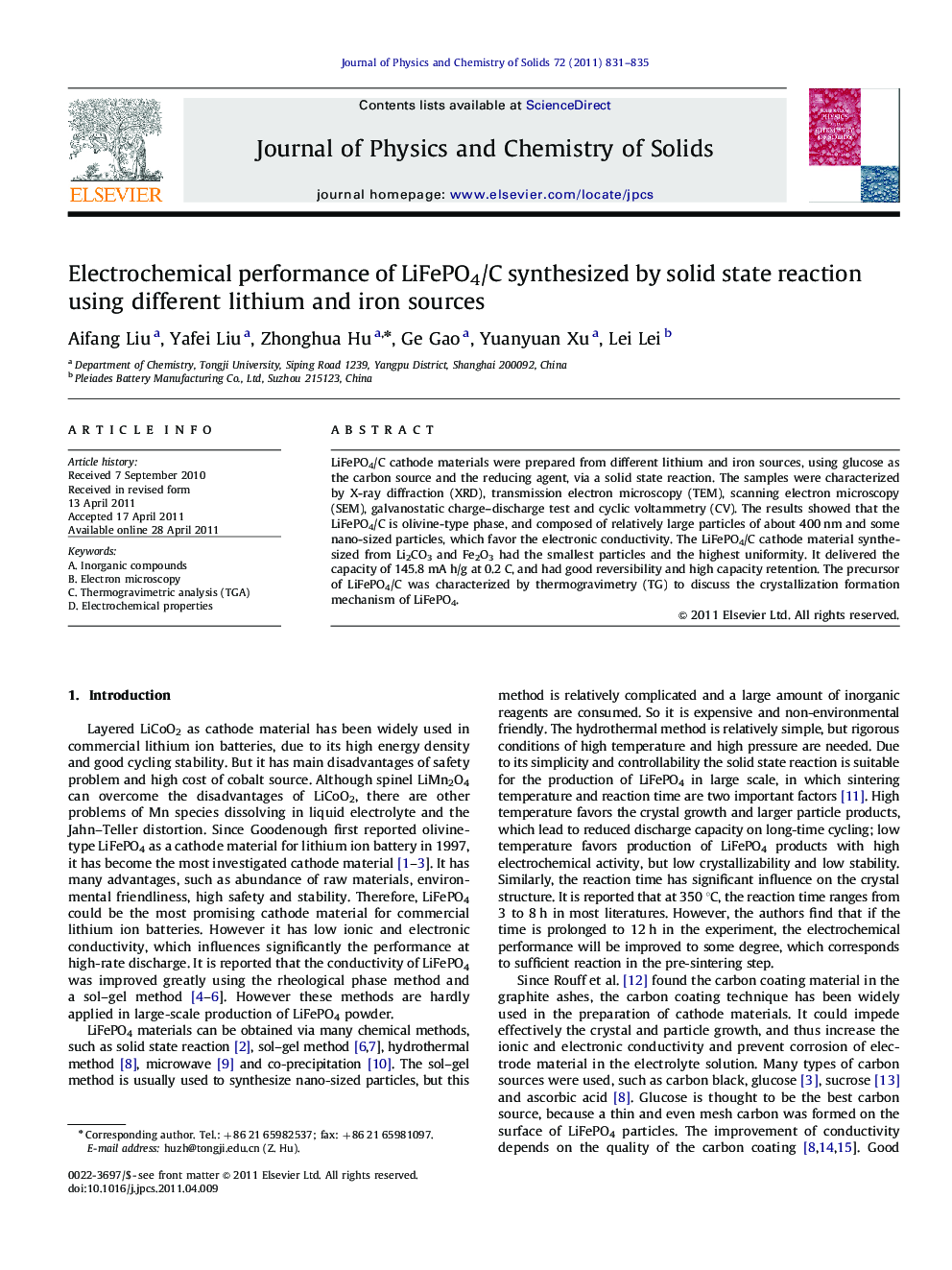| Article ID | Journal | Published Year | Pages | File Type |
|---|---|---|---|---|
| 1517047 | Journal of Physics and Chemistry of Solids | 2011 | 5 Pages |
LiFePO4/C cathode materials were prepared from different lithium and iron sources, using glucose as the carbon source and the reducing agent, via a solid state reaction. The samples were characterized by X-ray diffraction (XRD), transmission electron microscopy (TEM), scanning electron microscopy (SEM), galvanostatic charge–discharge test and cyclic voltammetry (CV). The results showed that the LiFePO4/C is olivine-type phase, and composed of relatively large particles of about 400 nm and some nano-sized particles, which favor the electronic conductivity. The LiFePO4/C cathode material synthesized from Li2CO3 and Fe2O3 had the smallest particles and the highest uniformity. It delivered the capacity of 145.8 mA h/g at 0.2 C, and had good reversibility and high capacity retention. The precursor of LiFePO4/C was characterized by thermogravimetry (TG) to discuss the crystallization formation mechanism of LiFePO4.
► Two lithium resources and two iron resources are used for preparation of LiFePO4/C. ► LiFePO4/C using Li2CO3 and Fe2O3 have the smallest particles and highest uniformity. ► Reactants play a key role on electrochemical performance. ► Correlations between crystallinity and performance are explored.
